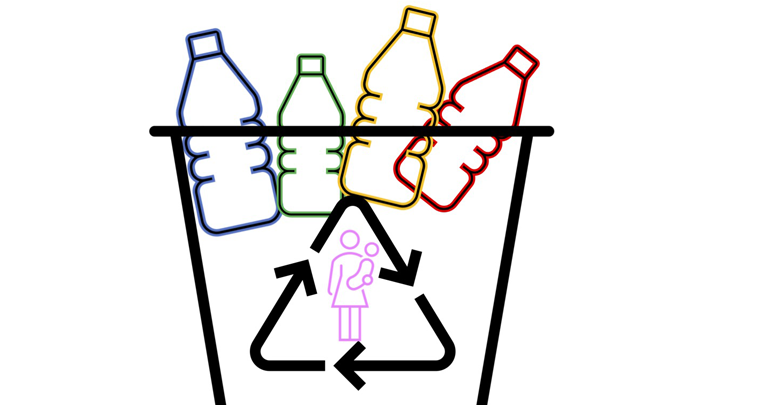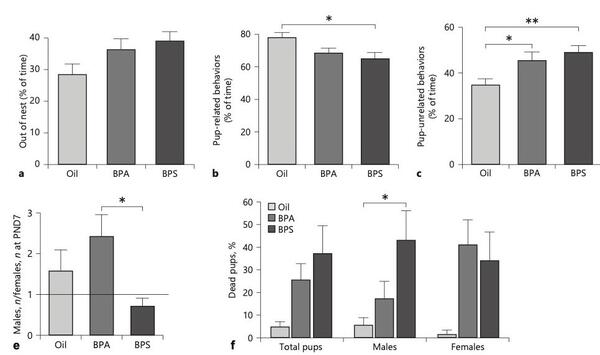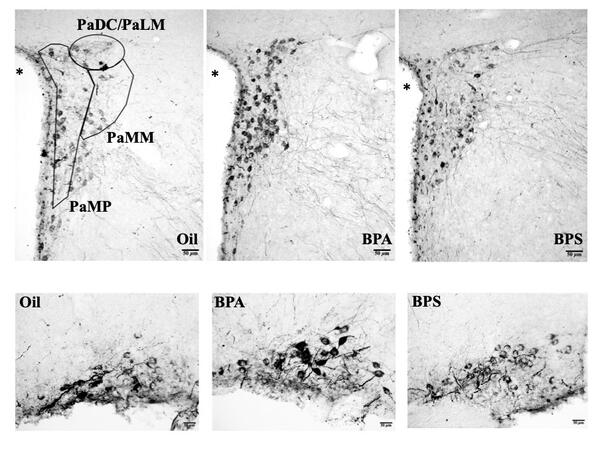
Neuroendocrinology
, July 2022
Exposure to either Bisphenol A or S Represents a Risk for Crucial Behaviors for Pup Survival, Such as Spontaneous Maternal Behavior in Mice
Bonaldo B a,b · Gioiosa L c · Panzica GC a,b · Marraudino M a,b
Research group NICO: Neuroendocrinology
Maternal behavior depends on a multitude of factors, including the environmental ones, such as Endocrine Disrupting Chemicals (EDCs), which are increasingly attracting attention. Bisphenol A (BPA), an EDC present in plastic, is known to exert negative effects on maternal behavior. Bisphenol S (BPS), a BPA-substitute, seems to share some endocrine disrupting properties.
In this study we focused on the analysis of the effects of low-dose (i.e., 4µg/kg body weight/day, EFSA TDI for BPA) BPA or BPS exposure throughout pregnancy and lactation in C57BL/6J mice.
During the first postnatal week we observed the spontaneous maternal behavior. At the pups' weaning, we sacrificed the dams and analyzed the oxytocin system, involved in the control of the maternal care, in the hypothalamic magnocellular nuclei. At birth, pups from BPA-treated dams tended to have lower male-to-female ratio compared to controls, while the opposite was observed among BPS litters.
During the first postnatal week, offspring mortality impacted differentially BPA and BPS litters, with more female dead pups among the BPA litters, while more male dead pups in the BPS litters, sharpening the difference in the sex ratio. BPA and BPS dams spent significantly less time in pup-related behaviors than controls. Oxytocin-ir in paraventricular and supraoptic nuclei was increased only in the BPA-treated dams. Alterations in maternal care, along with the treatment itself, may affect, later in life, the offspring physiology and behavior.
The exposure to BPs during sensitive developmental periods represents a risk for both dams and offspring, even at low environmentally-relevant doses, through the functional alteration of neural circuits controlling fundamental behaviors for pup survival, such as maternal behaviors.
Figure 1. Evaluation of spontaneous maternal behavior and effects of BPA or BPS exposure to the litters. The upper histograms show the overall percentage of time spent (a) out of the nest, (b) performing pup-related or (c) unrelated behaviors by the dams treated with vehicle, BPA or BPS, during the first postnatal week of the pups. The bottom histograms show (e) the sex ratio (number of males/number of females) among litters and (f) the percentage of total dead pups ( left ), male dead pups ( center ), and female dead pups ( right ) among litters obtained from dams treated with vehicle, BPA or BPS.
Figure 2. Immunohistochemical analysis of the oxytocin system . The images show oxytocin-positive cells in the paraventricular ( top ) and supraoptic ( bottom ) hypothalamic nuclei. In BPA-treated animals ( center ), there was an increase in oxytocin, in both nuclei, compared to the controls ( left ) and BPS-treated ( right ) animals.
a
Neuroscience Institute Cavalieri Ottolenghi (NICO), Regione Gonzole, Turin, Italy
b
Department of Neuroscience “Rita Levi-Montalcini,” University of Turin, Turin, Italy
c
Unit of Neuroscience, Department of Medicine and Surgery, University of Parma, Parma, Italy









